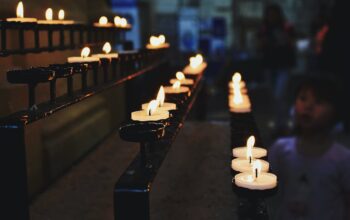Orienteering is a fun and exciting outdoor activity for all ages. It combines navigation with physical fitness in a race against the clock to find your way around a course marked by flags or beacons. So whether you’re looking to practice map-reading skills, explore nature, or have an adventurous day outdoors, orienteering can provide hours of entertainment.
Some essential pieces of gear make the experience more enjoyable for beginners to the activity. Knowing what to bring can help orienteers prepare for any obstacle they may encounter on their journey.
Rechargeable Headlamp
If you’re planning to navigate at night, a rechargeable headlamp is essential for any orienteering beginner. A headlamp is a hands-free lighting source that straps onto your head, freeing your hands to hold a map and compass or scramble over obstacles. When choosing a headlamp, look for one that is lightweight, comfortable to wear, and has a bright enough beam to light up your surroundings. Some rechargeable headlamps even come with red light options, which can help preserve your night vision or attract attention in an unexpected situation.
Backpack
As an orienteer, you’ll need to carry all your supplies with you. A light weight backpack is good for transporting essentials comfortably and efficiently. Look for packs with adjustable straps and chest support to keep the bag from slipping or bouncing while running.
Watch
If you’re competing in an orienteering event, a watch is essential to keep track of your time. Look for features such as a stopwatch timer or compass, which can be important if you get lost. Additionally, some watches have programs that let you save a route and check your speed during each leg of the course.
Detailed Map
For orienteering, a detailed map is an absolute must. When searching for the right map, look for one with topographical features like contour lines and symbolic signs. Contour lines show elevation changes on the land, while symbols indicate different vegetation types or structures, such as buildings or roads. It’s important to get an up-to-date map, so check the copyright date before buying.
Orienteering Glasses
While not essential, a pair of orienteering glasses can be a practical addition to your gear. They have large lenses that wrap around the sides of your head, providing clear peripheral vision. This can help you spot flags or landmarks and can also protect your eyes from branches or other obstacles.
Compass and Navigation Tools
Besides maps, having a compass and other navigation tools is key for orienteering. A basic compass can take bearings from one point to another. It should also have a declination adjustment, which helps orienteers line up map features with the terrain’s physical characteristics. Other navigation tools to consider are altimeters, which measure altitude, and GPS devices, which track distances, speeds, and locations.
Clothing and Apparel
The right clothing and apparel can make or break an orienteering experience. For a successful outing, wear comfortable clothing that’s appropriate for the weather. On warmer days, lightweight fabrics are best. For colder climates, dress in layers and bring waterproof materials like Gore-Tex or nylon garments to keep you warm and dry. Choose footwear with care; look for shoes with good ankle support and superior traction.
Safety Gear
Finally, safety should be a top priority for orienteering. Always keep a first-aid kit on hand in case of an emergency. It’s also wise to bring food and water for energy and hydration during long treks. A whistle is a useful tool for summoning help in case you get lost or injured.
Orienteering is an incredibly rewarding activity, especially when done with the proper gear. Ensure you have all the essential items on hand before heading out into the wilderness. Happy trails!



